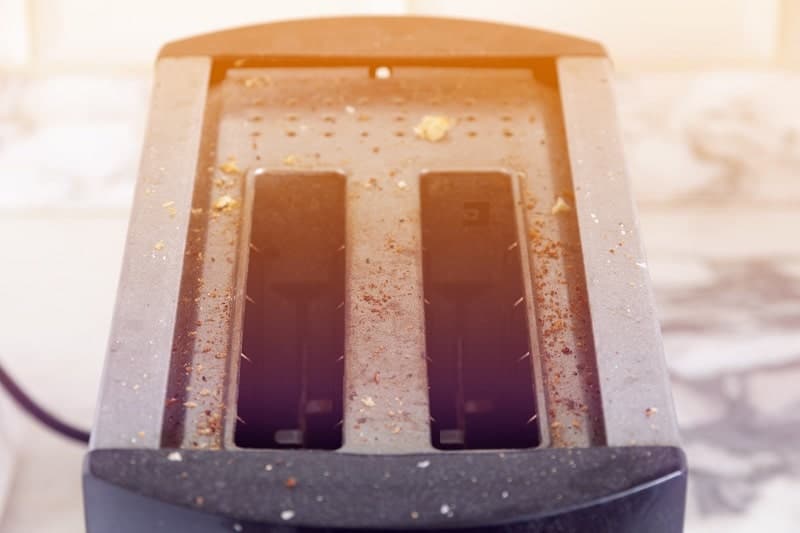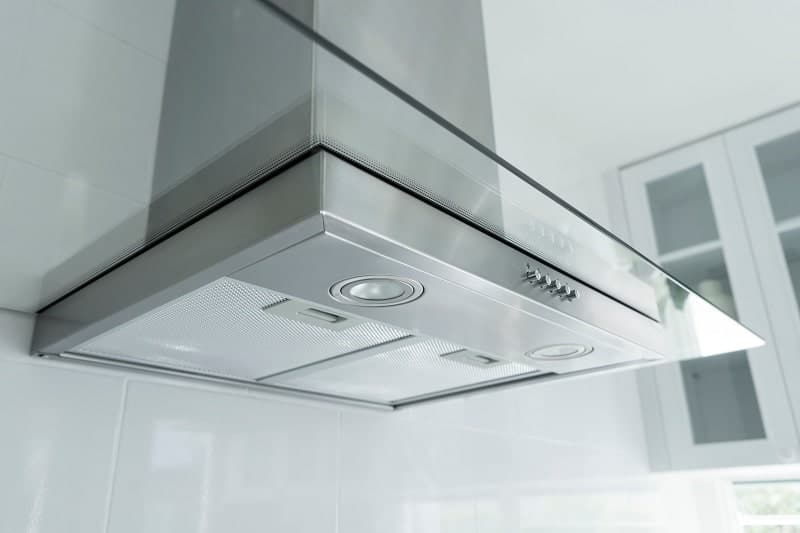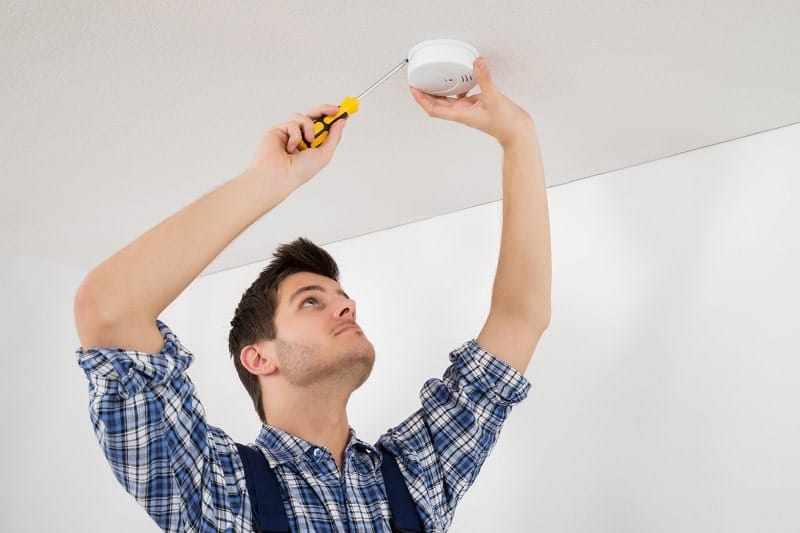So, you got a new toaster, and now it’s sending off your smoke alarm every time you try to make breakfast. What should you do to stop your toaster from setting off your smoke alarm?
Most of the time this will just move all of you making some changes to how you toast in the morning. This can also help you to spot an actual fire hazard well before it becomes more serious. Here’s what you need to know.
Getting your toaster to stop setting off your smoke alarm is fairly easy. The majority of times your toaster will set off your smoke alarm or because it hasn’t been cleaned. You can also try improving the ventilation in your kitchen, upgrading your smoke alarm, we’re trying a different model of toaster.
Getting your toaster to stop setting off your smoke alarm is the best thing since, well, sliced bread. Let’s get started.
What You’ll Need
Here’s the best news. You’re really not going to need any supplies to handle any of the solutions we will be talking about. This is really all about properly managing and up keeping your toaster and smoke alarm.
You might need a fan to improve the ventilation in your kitchen, but that’s really the only supply that we can think of. As far as DIY home solutions go, this is as easy as it gets.
Let’s Stop The Toaster From Setting Off a Smoke Alarm
Now, let’s break down the top 6 ways you can stop your toaster from setting off your smoke detector.
#1 Clean Your Toaster
Did you know that your toaster needs to be cleaned on a regular basis? No, we don’t mean throwing a toaster in the dishwasher. Your toaster was designed to require regular maintenance in order for it to function properly.

This is the most common cause for a toaster setting off a smoke detector. This is because the toaster itself has become dirty and full of crumbs as well as other particles. These can generate access smoke and set off a smoke alarm.
There are two components inside your toaster that we need to talk about. First is the heating elements that do the actual toasting. Even on their toastiest setting, they typically won’t set off a smoke detector on their own. This leads us to the next component.
At the base of your toaster is its crumb catcher. This is a tray that is designed to catch crumbs that fall from the toast, bagels, and toaster waffles you make every day. You should empty out this crumb catcher at least once a month.
When the crumb catcher gets full, those crumbs start to get close to the heating elements. Over time, those crumbs will char and can even catch fire. This is often a source of toasters setting off smoke alarms.
#2 Move Your Toaster
You should also consider your toaster’s location.
If you park your toaster right underneath your smoke detector, it’s much more likely to set it off. You should consider placing your toaster in a different part of your kitchen. This is easier said than done depending on the layout of your kitchen as well as where its outlets are located.
There’s one location in particular that you can put your toaster to minimize its chances of setting off your smoke detector.
#3 Toast Under Your Range Hood
The range hood on your oven has one important job. It’s got an internal venting system that sends smoke, steam, and other fumes to the outdoors. If you have a particularly troublesome toaster, you can put it on your stove top and use that range hood to your full advantage.

This won’t be a permanent solution, but it will give you an option. Just remember two things about this particular way of getting your toaster to stop setting off your smoke detector.
You want to put your toaster away after it cools down each time you use it. The last thing you want is to forget that you left your toaster on top of your stove top and accidentally heat up the oven or turn on the range with your toaster sitting on top. You also want to make sure that you turn on the range hood vent every time you toast.
If you don’t have a range hood, there are a few workarounds you can do to create the same effect.
#4 Turn on a Fan
Smoke detectors are designed to be very sensitive. When smoke alarms go off without an actual fire being present, it’s called a “nuisance alarm.” These are pretty common, and it’s generally a good thing that you get some false positives for the smoke detector.
It’s better to have your smoke detector go off too many times then not go off when you really need it.
You can do a few things to minimize these false positives. One of them is improving the ventilation in your kitchen. If steam and smoke build up in your kitchen, it’s much more likely for the smoke detector to start going off on its own. You can eliminate this potential cause by improving the ventilation in your kitchen.
Start by opening your windows. Hot air will naturally escape through the windows and carry some of that steam and smokey air with it. You can also add a fan to increase this ventilation.
Your ceiling fan should do a great job on its own. You could also add a fan pointing towards the outdoors in your windowsill. This will give you another source of ventilation.
You also need to consider that it’s your toaster that’s at fault.
#5 Get a New Toaster
If your toaster is defective, it will be toasting more than slices of bread.
If your toaster is old, breaking down, or defective from the factory there’s a good chance that it’s setting off the smoke alarm because it’s an actual fire hazard.
Toasters are typically very safe. Toasters have a lot of fail-safes built in which are designed to make it safe for everyday use around the home. However, there are defective and older models that can become a hazard. Here’s a few things to consider.
If you ever smell burning plastic around your toaster, it’s time to replace it. That’s a sign that the heating element is getting far too hot and is starting to burn the housing of the toaster itself. This can easily set off your fire alarm.
Smoke should also never come out of your toaster. Even on its hottest setting, there shouldn’t be smoke coming off of the bread and your toaster. If you do see smoke, it’s a sign that your toaster is overheating and you either need to clean the crumb catcher or get a new one.
You should also keep an eye out for how hot your toaster gets. You can tell if it’s getting too hot visually if the outer shell starts to warp over time.
Your toaster isn’t the only thing that you could consider replacing.
#6 Replace Your Smoke Alarm
It’s common for older smoke alarms to start going off constantly. This is a sign they’re starting to wear down and the internal mechanisms that detect the presence of smoke are being set off too easily. It can also be a sign that your smoke detector’s battery is starting to die.

If you’ve tried all of our toaster-based fixes, then it’s time for you to switch out your old smoke detector. It’s good to upgrade these every several years just to be on the safe side. You should also regularly replace the battery to make sure that your smoke alarm has all the power it needs.
Your Smoke Alarm Problems Are Toast
It’s pretty common for a toaster to set off a smoke alarm. It’s called “toast” after all.
Cleaning your toaster and creating better ventilation in your kitchen are the two fastest ways to stop your toaster from shutting off your smoke alarm. If those solutions don’t work, you need to consider that your smoke alarm might be getting old or your toaster might be defective.
Now you’ll be able to enjoy your breakfast without having to worry about that alarm waking up the whole neighborhood.







